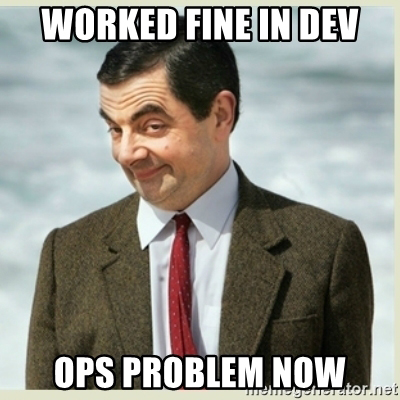
I admit it. I was vulnerable. As an overwhelmed and burned out marketer deep in the trenches at a SaaS start up, I was looking for ways to have my cake and eat it too.
So, it was easy, if not impossible, to fall in love with HubSpot’s shiny, new marketing automation software. It was, of course, the golden ticket! (Until it wasn’t, and I couldn’t figure out how to get out of the damn Chocolate Factory.)
Here’s some more background (I thought you’d never ask):
HubSpot was supposed to simplify my job (by automating marketing tasks, that would take 5 more humans to do on their own to which the finance department laughed and said, “Nope. See you Monday!”) My job was to help this software-as-a-service (SaaS) company grow their business.
I was faced with a nearly impossible quest.
(A shout out to all you marketers out there continually convincing your companies that ongoing marketing investment is integral to getting their products and services sold. It’s a bear with fangs wearing a full suite of medieval armor).
Why does this always get so weird? Because it needs to.
I was in a pinch. I had to not only increase my output exponentially BUT be able to sustain it for the foreseeable future. (It’s kind of like getting your running gear stolen minutes before a huge marathon starts and you’re looking around like, “where can I get new gear in the next two minutes???”)
Out of all the available automation software, HubSpot seemed prudent and I’m kind of a prudent guy…
Why I fell in love with marketing automation (aka my HubSpot)
Here’s where I dive into the true story of my love affair with HubSpot including how we grew apart, and eventually, parted ways. (You can forgo the box of tissues, I’m no Nicholas Sparks.)
- It was simple. Score!
- Obviously, my prospects’ businesses would love it too!
- I could leverage this software tool to promote compelling content.
- It would positively impact other small companies, medium-sized businesses, and marketers.
HOWEVER, again, I must admit that I was a bit naïve (and vulnerable). AND, it got the best of me.
Really, all I was looking for was a tool that would make my life easier while demonstrating good sales and marketing ROI allowing me to impressively show casing data to my clients. I believed Hubspot when it told me that this was not only possible, but that it would help me manage these marketing tactics:
- Create, manage and implement a leads process that could input news ones, ascertain their viability and quality, track leads throughout the sales process while also communicating quickly and collaboratively in real time with the sales team.
- Manage all B2B social media accounts of which, at the time, there were 20. (Feel free to break out the tissues on that one.)
- Track and manage my company’s brand reputation through online listening tools and communications (responses, interactions, relationship-ping, etc.).
- Use and integrate a B2B SaaS company specific platform into our sales and marketing process that could also effectively understand and use our buyer personas.
- Manage multiple marketing and sales assets and tools including related landing pages, service landing pages, content creation (e-books, case studies, and industry influencing white papers), email marketing campaigns and customer lists.
- Manage, review and help interpret website analytics.
- Improve the SEO value of all websites through a robust keyword research tool while incorporating SEO strategy evolutions over time.
Seriously, was that too much to expect a marketing automation software to do?
Apparently, in retrospect, it was.

The Limits of Marketing Automation Software
The truth was that I still had to do tons of work creating the right kind of quality content to feed the marketing engine.
UGH!
Though I love content creative, it is by far the most labor (time and money) intensive part of the marketing process.
Other Hubspot limitations (or fails, depending on how embittered of a former lover you are) include:
Of course, I could talk more about whether some of the things listed above are actually Hubspot’s, or any other marketing automation software, responsibility or not. Just know, I’m trying to write you the cliff notes version here, not the whole god*** novel, as entertaining as that would be. (Your time is valuable. I got you.)
I’m also going to try and prevent you from making a very costly mistake. Take it from someone (me) who’s spent hundreds of thousands of dollars in purchasing automation software only to then cancel it all.
Get caught up in the facts of the software, not the hype, before hitting the buy now button. Just because every Johnny, Jackie and Julie are using Hubspot doesn’t mean you should, nor does it mean it’s a perfect fit for your company’s marketing needs.
Honestly, you might be better off hiring some interns or making your kids (nieces/nephews/neighbor’s kids/random-kids-wandering-the-streets-who-obviously-need-something-to-occupy-their-time) to volunteer until you have money to hire some interns.
In addition to checking yourself on whether you need it, be sure to ask yourself this, “Are my expectations of what this software can do realistic?”
Am I expecting it to fan me and feed me grapes while I lounge on a couch surfing Reddit for more memes?
Lastly, when in doubt, make a pros and cons list like the one I made below:
Pros of marketing automation
The four things that began my love affair with Hubspot.
1) Inexpensive (and impressive) training
As with software across all the lands, you’ll need training to make efficient use of its features.
Though this is a necessary part of onboarding new software to your company, Hubspot does a great job with their training while keeping the costs reasonable.
Here’s the breakdown and costs (at the time) of my Hubspot training:
- In person, classroom training at their headquarters in Cambridge, MA (online courses are also available) –
- Three-day training costs (which I negotiated) down to $500/person from $1000/person (travel costs not included)
- Included ongoing access and use of classroom materials and content
- In person, consultant training at your place of business (this may not be virtual given COVID restrictions)
- Length of time is negotiable, and costs range from $350-1500
HubSpot is complex so if you do go this route, be sure to invest in the proper training of you and your staff.
2) One login plus one dashboard for all the metrics
Without a doubt, having one place to manage every aspect of your marketing is awesome.
(Goodbye, 17 different logins. I’ve already forgotten that you ever existed.)
HubSpot makes it possible to combine and review all of your marketing data from email campaigns, to social media projects, to landing page metrics, to Google Analytics all on the same dashboard!
I just got back a decade of my life for which I’ll be forever grateful.
3) Incredible social media automation
HubSpot’s social media tool is nothing short of amazing. Basically, it does the same thing it does with your marketing metrics, it allows you to manage, publish and monitor all your social media accounts, in one place.
You can even see your competitors’ social media metrics, what prospects are saying about your brand, as well as industry influencers. WAH! No way!
I’m sure you’ve heard of other social media specific automation tools like HootSuite Pro, Buffer, and Sprout Social, but none of them can hold a candle to HubSpot’s social media feature, which includes a monitoring function and analytics tracking that the others lack.
4) Robust and relevant marketing templates library
HubSpot’s marketing library is literally from outer space.
In fact, it’s one of the most impressive components of the HubSpot subscription. They have thousands of easy-to-use, design only templates that help create extraordinary marketing collateral like email campaigns, case studies, e-books, etc. You name it, and they got it (saving you thousands of dollars in outsourced marketing materials creation though you still need to create the content).
Just to reiterate, even when using a marketing automation software like a Hubspot to execute marketing tasks, manage social media and track your metrics, you’ll still need to create your marketing strategy and your content yourself. Both of these tasks take expertise and time to do well. So, either hire folks to do them in-house or outsource them.
Though it’s clear that Hubspot and other software like it is full of beneficial features. However, it’s not a plug and play.
Ultimately, you’ll still need humans to manage the strategy and create the content, which is where you end up getting the most bang for your buck on a budget. So, it may be wise to wait before investing in this type of software.
I’ll dive deeper into the cons of this type of software next.
Cons of marketing automation (and HubSpot)
If Hubspot were to ever ask me what it would take for us to get back together, I’d first ask for my s*** back. Then, I’d hand them this cons list and walk away to cement our separation using the pinnacle of Italian style and comfort: pasta.

1) Utter Lack of Integration Options (you’re killing me here!)
HubSpot’s largest shortcoming (aka kryptonite) out of the gate is its decision to not play nicey-nice with other software integrations out of the gate.
The result? You must build your content management system (CMS) in HubSpot and then run all of your sales and marketing through their platform.
I do get it (I am in sales and marketing after all). It’s a way to get users locked into HubSpot’s product and subscription because it’d be too much of a pain-in-the-ass time suck to do so.
The irony is this: I’ve never heard of or met a marketing department that runs 100% of everything through only one tool. Have you?
No, that’s a tall order even for Darth Vadar who’s bent on using the Death Star to annihilate every single molecule in the universe. When they failed, it was like, “Duh. You should have diversified your software (and hardware) systems.”
To survive and succeed, most businesses need more flexibility than HubSpot can provide.
For example, let’s say you use WordPress as your CMS and website platform (number of pages is inconsequential here). You want your site’s forms, which capture client lead contact info, to integrate into the form plugin through your WordPress site and HubSpot. Piece of cake, right?
WRONG! They don’t automatically integrate for free as I ^%$@^&* learned one late and stressed out night. (Obviously, me and HubSpot go way back.)
In order to get the integration, it’s gonna cost you to the tune of, at the time, $200 dollars for each customization to a design and form template. What if you have hundreds of them? (Pretty gross, right?)
Lastly, don’t forget any customer relationship management (CRM) or professional services automation (PSA) software such as Salesforce, ConnectWise, Autotask that you might be using. That too, will need to be integrated into HubSpot, so add another $10,000 to $20,000 dollars to the bill.
Are you freaking out yet? AND on top of that, you’ll need a project manager to oversee and implement the integration to ensure its success.

The sad thing is, I really used to like this song until I met HubSpot.
2) Tricky and Costly Email Campaigns
Not only is HubSpot’s email marketing automation feature a bit tricky to you, they charge you more and more money as your client contact list grows. (What is this Hollywood?)
When setting up the workflows for your email campaigns, please be forewarned that they’re based on conditional logic, which can lead to much confusion and frustration.
Mailchimp, an email marketing service, does a way better job at quickly and easily setting up email campaigns workflow, the emails themselves and setting up contact lists minus all the knuckle cracking, nail biting and cussing.
Basically, if you’re short on patience and time, look elsewhere.
3) HubSpot made it difficult to pay them…?
I still don’t get this. How hard can setting up automated payments for an automation software company be?
Apparently, very.
It seemed like every month I was jumping through hoops, logging in to “fix” something that wasn’t triggering the accurate payment. This is how their response felt.

Though it wasn’t catastrophic, it was definitely mosquito level annoying, which is to say a deal breaker in my book. Or to put it another way, if you’re difficult to work with, you just voted yourself off my island.
Got Marketing Questions? We can help.
By clicking this button, you submit your information to Scott Growth Strategies, who may use it to communicate with you regarding this and other services.
